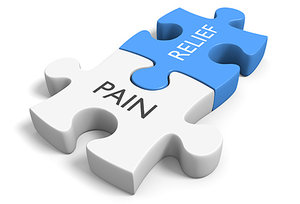Fewer Opioids, More Chiropractic
By Editorial Staff
Despite increasing awareness of the dangers of opioid pain medication, a paper published last year suggests approximately 22 percent of U.S. adults with chronic pain use opioids. This is based on data from the 2019 National Health Interview Survey (NHIS), which concluded that more than 50 million adults experience chronic pain.
But what about the remaining 78 percent of chronic pain patients? What are they using to manage their pain? First, there's good news. A recent review of the 2019 NHIS data examined 11 pain management techniques used over a three-month period. The authors found that more than half (54.7 percent) of patients only used
non-opioid pain management techniques, 4.4 percent only used opioids and 10.7 percent used both. And of those who utilized non-opioid pain management techniques, more than a third (35.4 percent) used "complementary techniques," with 11.6 percent using "spinal manipulation or other forms of chiropractic care" – that's approximately 5.8 million U.S. adults in chronic pain using chiropractic.
 But there's also bad news: According to the review, almost a third (31.7 percent) of chronic pain patients did not use any pain management techniques during the previous three months. If you're one of that third, why are you choosing to live with chronic pain? If you know someone who's suffering, ask them the same question. The solution, as more and more people are realizing, isn't pain medication (and particularly not opioids); it's nondrug alternatives – starting with chiropractic care.
But there's also bad news: According to the review, almost a third (31.7 percent) of chronic pain patients did not use any pain management techniques during the previous three months. If you're one of that third, why are you choosing to live with chronic pain? If you know someone who's suffering, ask them the same question. The solution, as more and more people are realizing, isn't pain medication (and particularly not opioids); it's nondrug alternatives – starting with chiropractic care.
Resources
- Dahlhamer JM, Connor EM, Bose J, et al. Prescription opioid use among adults with chronic pain: United States, 2019. Natl Health Stat Report, 2021;(162):1-9.
- Zelaya CE, Dahlhamer JM, Lucas JW, Connor EM. Chronic pain and high-impact chronic pain among U.S. adults, 2019. NCHS Data Brief, 2020 Nov;(390):1-8.
- Groenewald CB, Murray CB, Battaglia M, et al. Prevalence of pain management techniques among adults with chronic pain in the United States, 2019. JAMA Netw Open, 2022;5(2):e2146697.

